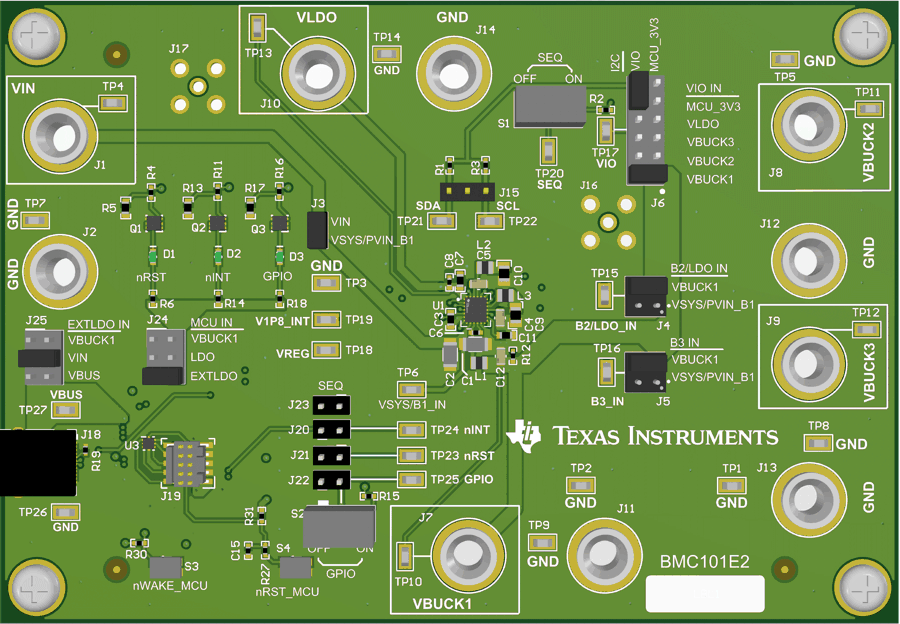SLVUCG6 November 2022 TPS650350-Q1
- TPS650350-Q1 EVM User's Guide
- Trademarks
- 1 Introduction
- 2 Requirements
- 3 Operation Instructions
- 4 EVM Configurations
- 5 Test Points
- 6 Graphical User Interface
- 7 Typical Performance Plots
- 8 TPS650350-Q1 EVM Schematic
- 9 TPS650350-Q1 EVM PCB Layers
- 10TPS650350-Q1 EVM Bill of Materials
4 EVM Configurations
The following sections outline how to configure the TPS650350-Q1 EVM for general experimentation.
 Figure 4-1 TPS650350-Q1 EVM Top View
Figure 4-1 TPS650350-Q1 EVM Top View